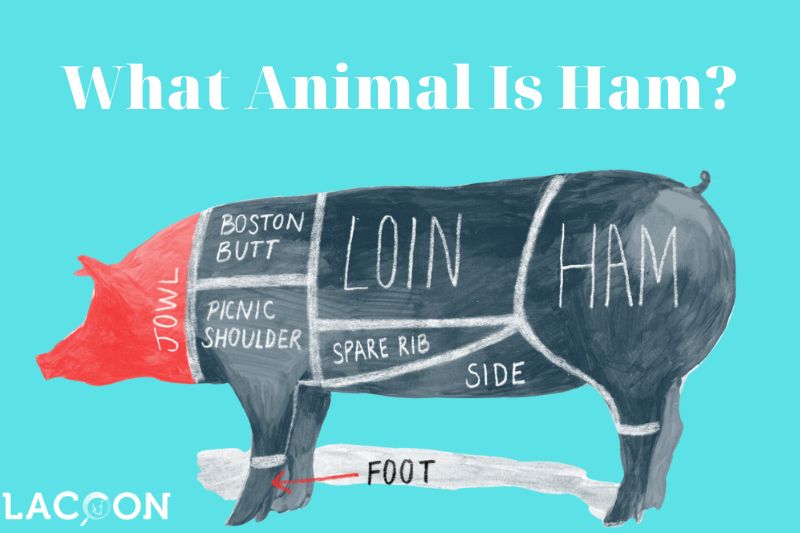Ham is a popular food item that humans have enjoyed for centuries. It is often served during holidays and special occasions and can be found in a variety of dishes such as sandwiches, soups, and salads.
Despite its widespread consumption, many people are unaware of what animal ham comes from.
In this article, Lacoon will explore the origins of ham, the different types of ham available, and answer the question, “What animal is ham?”
What Is Pork?
Pork is the meat that comes from a pig, and it is one of the most widely consumed meats in the world.
It is a versatile protein source, and it can be prepared in a variety of ways, including grilling, roasting, frying, and stewing.
Pork is also used as a base for many processed meat products, such as sausages, hot dogs, and of course, ham.
What Is Ham?
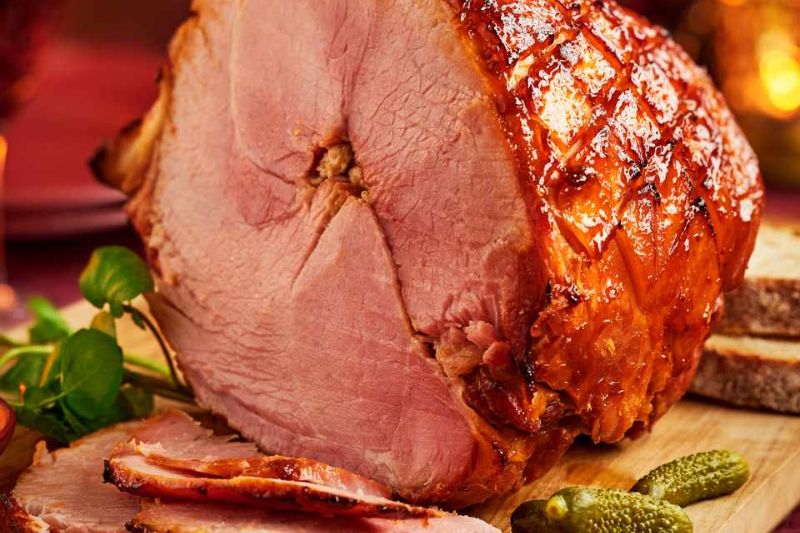
Ham is made from the hind leg of a pig, and it undergoes a curing process to preserve and enhance its flavor.
The curing process can involve wet curing, in which the leg is submerged in a brine solution, or dry curing, where the leg is rubbed with a mixture of salt, sugar, and other spices.
The cured ham can then be smoked, adding a rich, smoky flavor, or left unsmoked, resulting in a milder taste. Finally, the ham may be cooked through baking, boiling, or grilling.
There are several types of ham, including:
- Fresh ham: This is an uncured, uncooked hind leg of the pig.
- Cured ham: This type of ham is preserved through wet or dry curing methods.
- Smoked ham: This is a cured ham that has been smoked to add depth of flavor.
- Baked ham: A cured ham that is cooked through baking, often with a glaze or other seasonings.
Value of the Ham
Ham has several nutritional benefits and is a valuable source of protein, vitamins, and minerals. Here are some of the nutritional benefits of ham:
- Protein: Ham is an excellent source of high-quality protein, with approximately 19 grams of protein per 3-ounce serving. Protein is essential for building and repairing muscle tissues, as well as supporting the immune system, and maintaining healthy skin, hair, and nails.
- Vitamins and minerals: Ham contains several essential vitamins and minerals, including vitamin B6, vitamin B12, zinc, and iron. These nutrients are important for maintaining healthy blood cells, supporting brain function, and boosting the immune system.
- Low in fat: While some cuts of ham can be high in fat, many types of ham, such as lean or trimmed ham, are low in fat. Ham is also a good source of monounsaturated and polyunsaturated fats, which can help lower cholesterol levels and reduce the risk of heart disease.
- Convenient and versatile: Ham is a popular and convenient food, as it can be stored for a long time and used in various dishes. From sandwiches and salads to main courses and appetizers, ham is a versatile ingredient that can be adapted to many different recipes.
What’s the Difference Between Ham and Pork?
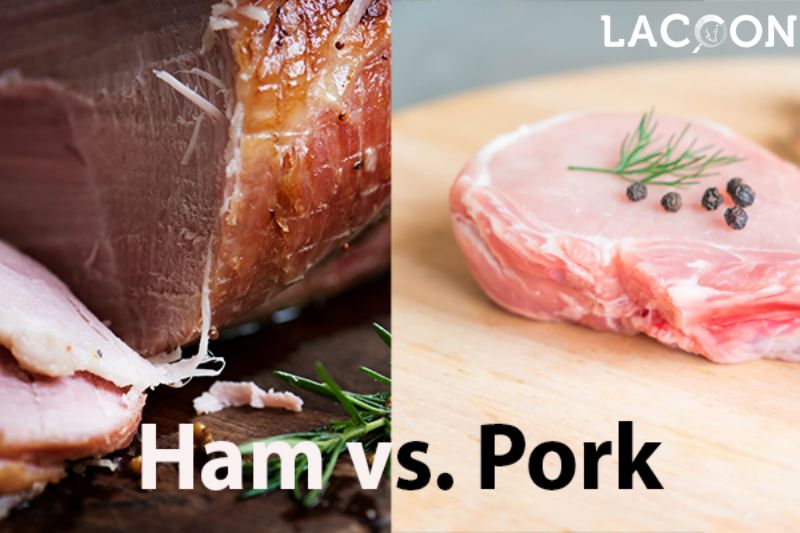
Ham and pork are both derived from the meat of pigs, but they differ in a few important ways. Here are three key differences between ham and pork:
- Preservatives: Ham often includes preservatives like nitrites and nitrates, while pork is typically sold as raw meat without any additives. These preservatives are added to ham to help preserve it and give it a longer shelf life.
- Shelf life: Ham has a longer shelf life than raw pork. Home cooks need to cook raw pork shortly after purchasing it or store it in the freezer as soon as possible to prevent spoilage. By contrast, ham can last in the fridge for several days, while dry-cured ham lasts for weeks.
- Flavor: One of the main differences between ham and other types of pork is the flavor. Pork typically has a mild flavor, while ham has a stronger, smoky flavor. This is because ham is often cured with a combination of salt, sugar, and spices before it is cooked or smoked. The curing process can take several days or even weeks, which allows the flavors to develop and intensify.
8 Common Types of Pork Products

In addition to ham, there are numerous other pork products that you may encounter in the grocery store or on a restaurant menu. Some of the most common pork products include:
- Bacon: Made from the side or belly of the pig, bacon is typically cured, smoked, and thinly sliced. It is a popular breakfast food and can also be used as a topping or ingredient in other dishes.
- Pork chops: These are cuts of meat from the loin of the pig, and they can be bone-in or boneless. Pork chops are often grilled, pan-fried, or baked.
- Sausages: Made from ground pork and a variety of spices, sausages come in many forms, such as links, patties, and bulk sausage meat. They can be fresh, smoked, or cured.
- Pork tenderloin: This is a lean, tender cut of meat from the loin of the pig. It is often roasted or grilled and can be sliced into medallions for serving.
- Ribs: Pork ribs come from the ribcage of the pig and can be prepared in various ways, including grilling, smoking, or slow-cooking. The most common types of pork ribs are baby back ribs and spare ribs.
- Ground pork: This is pork that has been ground or minced and can be used in a variety of dishes, such as meatballs, burgers, and stir-fries.
- Shoulder roast: Also known as a “pork butt” or “Boston butt,” this cut comes from the upper shoulder of the pig. It is often used for slow-cooking methods, such as braising or slow roasting, and is popular for pulled pork.
- Ham hock: This is the lower portion of the pig’s hind leg, and it is often used in soups, stews, and braised dishes to add flavor and richness.
Difference Between Bacon and Ham
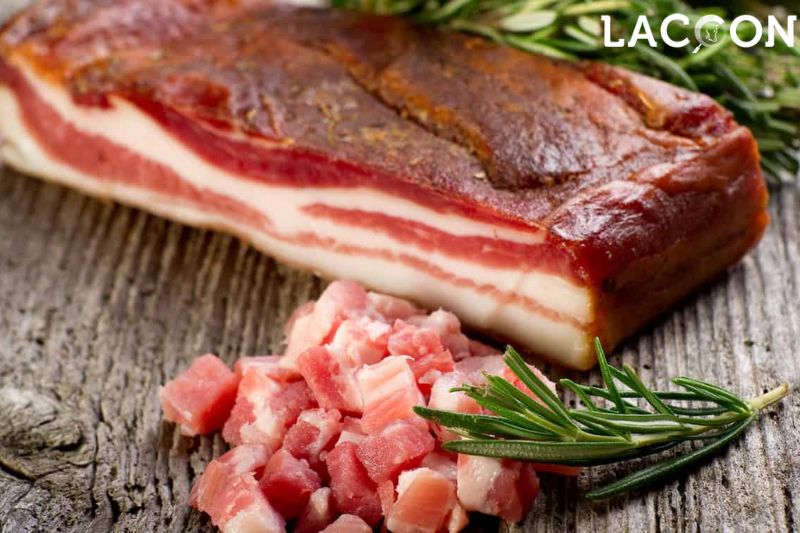
Both bacon and ham are pork products that have undergone a curing process, but they differ in several ways. Bacon is made from the side or belly of the pig, while ham comes from the hind leg.
The curing process for bacon often involves a combination of salt, sugar, and sometimes nitrates or nitrites, whereas ham can be cured using wet or dry curing methods.
Additionally, bacon is typically smoked and thinly sliced, while ham can be smoked or unsmoked and is usually served in thicker slices or as a large roast.
7 Reasons Why You Should Avoid Ham This Holiday Season

While ham can be a delicious and versatile option for many, there are some considerations to keep in mind when deciding whether to include it in your holiday meals:
- High sodium content: The curing process used for ham often involves a significant amount of salt, which can contribute to high sodium levels in the finished product. High sodium intake has been linked to increased risks of high blood pressure, heart disease, and stroke.
- Nitrates and nitrites: Some hams may contain nitrates or nitrites used as preservatives and can have potential health risks when consumed in large quantities.
- Processed meat: Ham is processed meat, and studies have suggested that a high intake of processed meats may be linked to an increased risk of certain types of cancer.
- Fat content: While ham can be a lean source of protein, some cuts may have a high-fat content, particularly when served with the skin or a layer of fat intact.
- Allergies and sensitivities: Some people may have an allergy or sensitivity to pork or specific ingredients used in the curing process, such as certain spices or preservatives.
- Ethical concerns: Some individuals may choose to avoid ham due to concerns about animal welfare, environmental impact, or religious dietary restrictions.
- Alternatives: If you are looking for a healthier or more ethical option for your holiday meal, consider choosing a lean cut of meat, such as turkey or chicken, or opting for a plant-based protein source, such as lentil loaf, tofu, or tempeh. These alternatives can be just as delicious and satisfying while offering additional health benefits and addressing ethical concerns.
FAQs
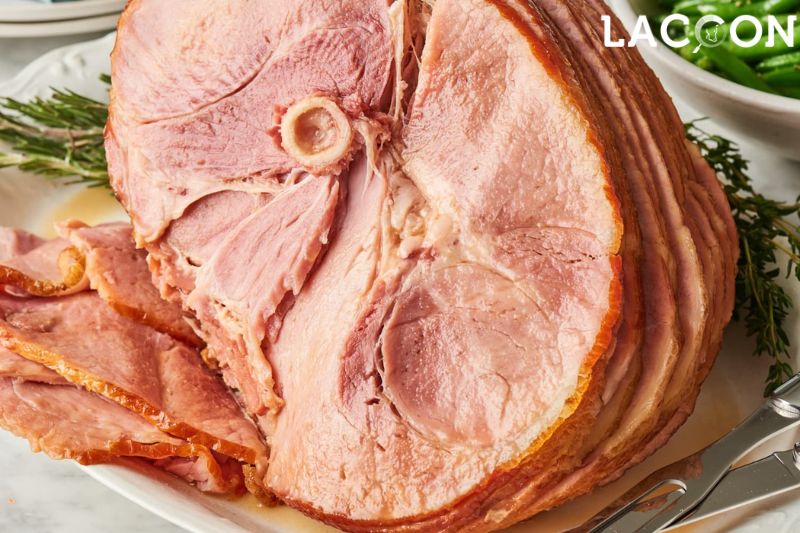
Is ham just a pig?
No, ham is specifically a cut of pork from the hind legs of a domesticated pig that has been preserved through curing and often smoking.
Can ham be made from cows?
While ham is typically associated with pork, the term “beef ham” is used to refer to the meat from the back of a cow’s or bull’s thigh that has been cured in a similar way to pork ham.
Is ham considered lamb or pork?
Ham is pork, specifically the meat from the hind leg of a pig that has been cured and often smoked.
Is steak only from cows or pigs?
Steak is a cut of meat that is typically taken from the fleshy parts of a cow, but it can also come from other animals, such as pigs, sheep, and goats.
Conclusion
Ham, made from the hind leg of a pig, has a long history and holds a special place in culinary traditions around the world.
While it is a popular and versatile ingredient, it is important to be aware of the potential health concerns and ethical considerations associated with its consumption.
By understanding the differences between ham and other pork products, as well as exploring alternative protein sources, you can make informed decisions about your dietary choices and enjoy a delicious and satisfying meal this holiday season.

